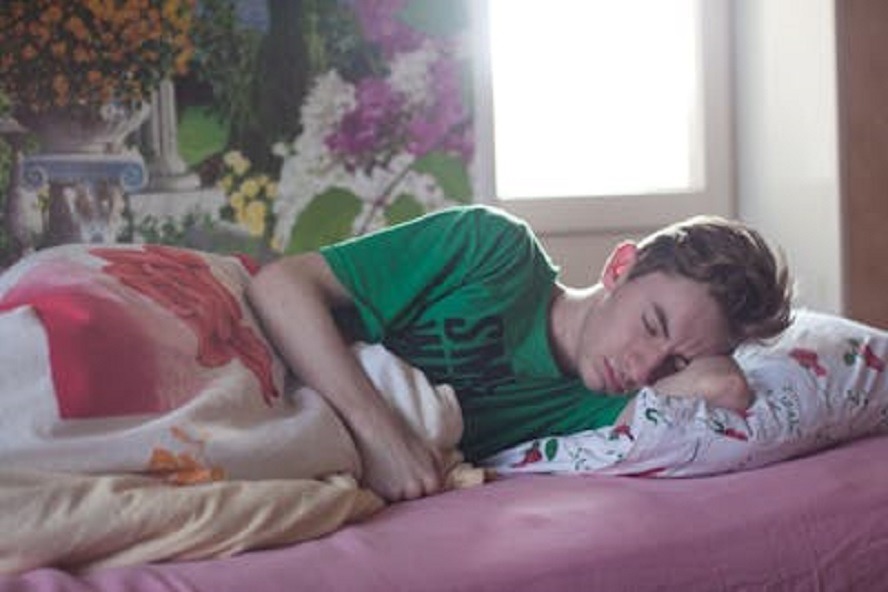Sexsomnia: Shedding Light on a Sleep Disorder We Often Overlook

Sexsomnia, a peculiar sleep disorder, is like an unwelcome guest in the realm of sleep disorders. It intrudes upon the sanctity of sleep, causing embarrassment, confusion, and even legal troubles for those affected. Yet, it remains largely hidden from public discourse, tucked away in the shadows of discomfort and misunderstanding.
Imagine waking up to find yourself in the midst of a sexual act, completely unaware of how you got there. For many, this is not a mere imagination but a reality they face with each episode of sexsomnia. From uncontrollable sexual behaviors to engaging in intimate acts without any recollection, the experiences vary, but the underlying distress is profound.
Dr. Carlos Schenck, an expert in the field, explains that sexsomnia is not a product of dreams but rather a disorder of arousal, occurring during the deepest stages of sleep. The mind remains oblivious while the body acts out, leading to potentially dangerous situations.
Understanding sexsomnia is challenging, primarily because those affected often have no memory of their actions. It’s the bed partners who bear witness to these episodes, initiating conversations that are as uncomfortable as they are necessary. Yet, misconceptions abound, with some wrongly attributing conscious motives to unconscious behaviors.
The consequences of sexsomnia can be devastating, straining relationships and triggering legal ramifications. Dr. Schenck recounts cases where accusations of infidelity arose due to unconscious actions, tearing apart trust and stability within families. Legal experts delve into the complex terrain of sleep forensics, distinguishing between genuine disorders and excuses.
The triggers of sexsomnia remain elusive, though genetic predisposition and conditions like obstructive sleep apnea are implicated. Treatment options range from medication to behavioral interventions, each with its pros and cons. While medication may offer relief for some, others find solace in lifestyle adjustments and therapy.
Jennifer Mundt emphasizes the importance of education in tackling sexsomnia. By understanding the intricacies of sleep stages and the distinct nature of parasomnias, individuals can alleviate anxiety and foster a conducive sleep environment. From sleep hygiene practices to relaxation techniques, a multifaceted approach is key to managing sexsomnia effectively.
Behavioral treatments, including clinical hypnosis, offer promising avenues for those wary of medication’s side effects. By inducing a trance-like state, individuals can explore new coping mechanisms and reframe their relationship with sleep. It’s a journey of self-discovery and empowerment, reclaiming agency over one’s nocturnal experiences.
Also Read: Navigating Pregnancy with Obesity: Expert Tips for a Healthy Journey
In shedding light on sexsomnia, we dismantle the stigma and foster empathy for those grappling with this misunderstood disorder. By amplifying voices from the shadows, we pave the way for greater awareness, acceptance, and support. Let us not shy away from uncomfortable conversations but embrace them as catalysts for change in our understanding of sleep and its complexities.
Q&A
Q: What is sexsomnia, and how does it differ from other sleep disorders?
A: Sexsomnia, also known as sleep sex, is a parasomnia characterized by engaging in sexual behaviors during sleep, often without any conscious awareness. Unlike other sleep disorders such as sleepwalking or nightmares, sexsomnia occurs during deep stages of sleep, where the mind remains unaware while the body acts out.
Q: What are some documented cases of sexsomnia, and how do they impact individuals and their relationships?
A: Documented cases of sexsomnia include individuals engaging in sexual acts or behaviors while asleep, such as attempting to force sexual activity on a partner or masturbating. These episodes can lead to confusion, embarrassment, and strain in relationships, with some cases even resulting in accusations of infidelity or legal consequences.
Q: What are the potential triggers or causes of sexsomnia, and are there any known risk factors?
A: While the exact causes of sexsomnia are not fully understood, genetic predisposition and conditions like obstructive sleep apnea are believed to play a role. Having a family history of parasomnias or experiencing sleep disturbances may also increase the risk of developing sexsomnia.
Q: How is sexsomnia diagnosed, and what are the challenges in identifying and treating this sleep disorder?
A: Sexsomnia is often diagnosed based on reported symptoms from bed partners or family members, as individuals may have no memory of their sleep behaviors. The lack of awareness and stigma surrounding sexsomnia can pose challenges in seeking diagnosis and appropriate treatment. Behavioral interventions, medication, and lifestyle adjustments are commonly used to manage sexsomnia, but finding the right approach may require trial and error.
Also Read: Guide to Transdermal Patches for Chronic Pain Relief in Women’s Health
Q: What role does education and awareness play in addressing sexsomnia, and how can individuals support loved ones experiencing this sleep disorder?
A: Education and awareness are crucial in destigmatizing sexsomnia and fostering understanding among individuals and communities. By learning about sleep stages, recognizing symptoms, and offering support, loved ones can create a safe and empathetic environment for those affected by sexsomnia. Seeking professional help and exploring treatment options together can also be beneficial in managing the disorder effectively.







